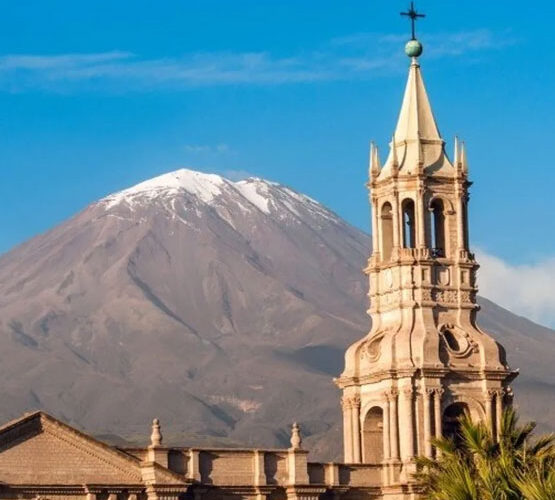Arequipa is a city located in the south of the Andes Mountains of Peru, at 2330 mamsl.
In Quechua language, Arequipa means “we stay here”.
Named “the white city” because of the volcanic stones of whitish color that compose many traditional houses of baroque style and important constructions such as the neoclassic cathedral basilica of the XV I century located in the center of the city.
Arequipa is surrounded by three volcanoes: Misti, Chachani and Pichu Pichu.
Currently, it is the second most important city of Peru, by its demography and its economy.
We find two bridges built by Gustave Eiffel.
The people of Arequipa are known to be very educated and have a particular accent. The Nobel Prize of Literature Mario Vargas Llosa was born in Arequipa.
Its gastronomy is considered one of the best in South America.
The traditional cuisine of Arequipa is very tasty, copious, varied, with typical ingredients of the place, such as shrimp, commonly served in the dish “chupe”, a very delicious soup, accompanied by Andean herbs such as the huacatay. The sweet pepper “rocoto” often stuffed with beef and accompanied by a potato gratin.
The Monastery of Santa Catalina is a small isolated town, a religious tourist complex of great beauty, full of history, a must see.
We find the Colca Canyon, with a depth of 4160 m and the 4th deepest canyon in the world. Keep very picturesque villages, very friendly people, peaceful, with typical crafts.
Arequipa is part of the Unforgettable Peru tour.




